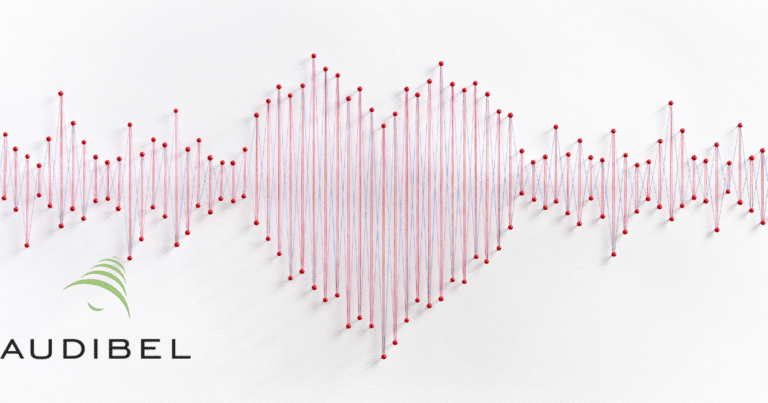As we go about our daily lives, we are constantly bombarded by a wide range of sounds. From the melodic tunes of our favorite songs to the rhythmic beats of the city, our ability to hear and interpret these sounds plays a crucial role in our overall well-being. Understanding how different frequencies affect our hearing capacity is of utmost importance in maintaining good hearing health. In this blog post, we will explore the fascinating world of frequencies and their impact on our ability to hear.
The Basics of Frequencies and Hearing
To comprehend how frequencies affect our hearing, we must first understand what frequency is. In simple terms, frequency refers to the number of sound wave cycles that occur per second. The higher the frequency, the higher the pitch of the sound. Humans have the ability to perceive sound frequencies ranging from 20 Hz to 20,000 Hz.
Different Frequency Bands and Their Characteristics
Sounds can be divided into three main frequency bands: low, mid, and high. Low-frequency sounds, typically below 1,000 Hz, are often associated with deep, rumbling sounds like thunder or the bass in music. Mid-frequency sounds, ranging from 1,000 Hz to 5,000 Hz, are crucial for speech intelligibility and music appreciation. High-frequency sounds, above 5,000 Hz, are known for their sharpness and are critical for sound localization.
The Impact of Low Frequencies on Hearing
Low-frequency sounds have a unique effect on our hearing. They are not only felt but also heard. Think of the thumping of a bass drum at a concert or the deep rumble of a passing train. These low-frequency sounds can be rich and immersive, but they also pose challenges. Due to their long wavelength, low-frequency sounds can easily penetrate obstacles, making it difficult to escape their reach. This can result in noise pollution, affecting our concentration and overall well-being.
The Role of Mid Frequencies in Hearing
Mid frequencies play a pivotal role in our everyday lives. They help us understand speech and communicate effectively. These frequencies enable us to differentiate between consonant sounds, contributing to speech intelligibility. In the realm of music, mid-range frequencies provide the body and warmth to instruments, allowing us to appreciate the nuances of a melody or a musical composition. Whether we’re engaging in conversation or enjoying a symphony, mid-range frequencies are at the heart of our auditory experiences.
The Influence of High Frequencies on Hearing
High frequencies are essential for sound localization and clarity. They allow us to determine the direction from which a sound is coming. Think of a chirping bird or a whistling kettle. These high-frequency sounds give us valuable cues about our environment and help us stay alert to potential dangers. Unfortunately, high-frequency hearing loss is common as we age, making it harder to hear certain consonant sounds and resulting in speech distortion.
Factors Affecting Individual Hearing Capacity
Several factors can influence our individual hearing capacity. As we age, our sensitivity to different frequencies naturally decreases. This age-related hearing loss, known as presbycusis, particularly affects our ability to hear high-frequency sounds. Additionally, exposure to loud noises over time can damage our hearing, leading to specific frequency-related hearing loss. Other factors, such as genetics, certain medical conditions, and even medications, can also impact our hearing ability.
The Role of Hearing Aids in Enhancing Frequency Perception
For those experiencing hearing difficulties, hearing aids can be a game-changer. These sophisticated devices are designed to amplify specific frequencies, helping restore our ability to hear and perceive sounds more clearly. Modern hearing aids incorporate advanced technologies that target different frequency ranges, allowing for a personalized listening experience. Whether it’s amplifying high-frequency sounds for better speech comprehension or fine-tuning mid-frequency range for music enjoyment, hearing aids can greatly enhance our overall hearing capacity.
In conclusion, understanding the influence of various frequencies on our hearing capacity is crucial for maintaining good hearing health. Low frequencies provide depth and immersion but can also pose challenges in terms of noise pollution. Mid frequencies are essential for speech intelligibility and music appreciation, while high frequencies contribute to sound localization. As we age, our hearing sensitivity to different frequencies may decline, and exposure to loud noises can lead to frequency-specific hearing loss. Thankfully, hearing aids are available to help us enhance frequency perception and improve our overall hearing capacity. Regular hearing evaluations and seeking professional help when experiencing hearing difficulties are paramount to our auditory well-being. Stay informed about the impact of frequencies on hearing for better hearing health and a richer auditory experience.


